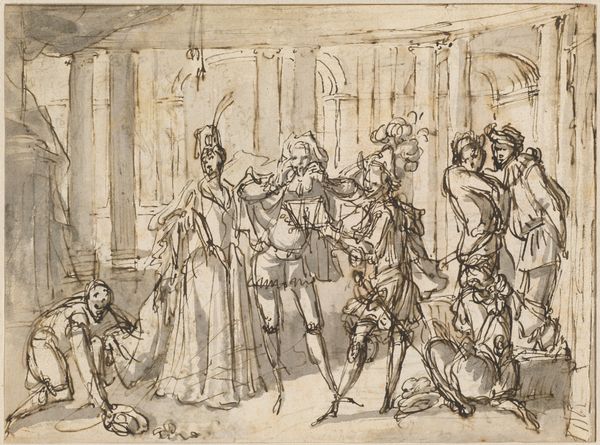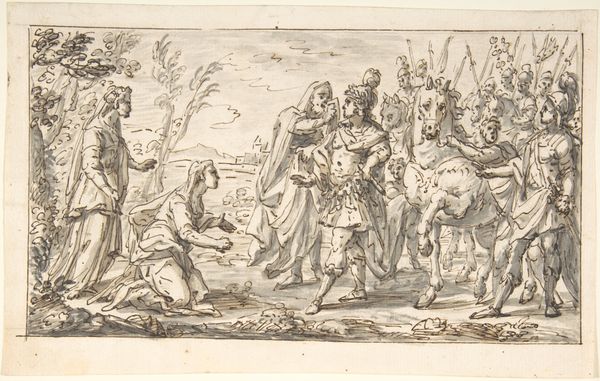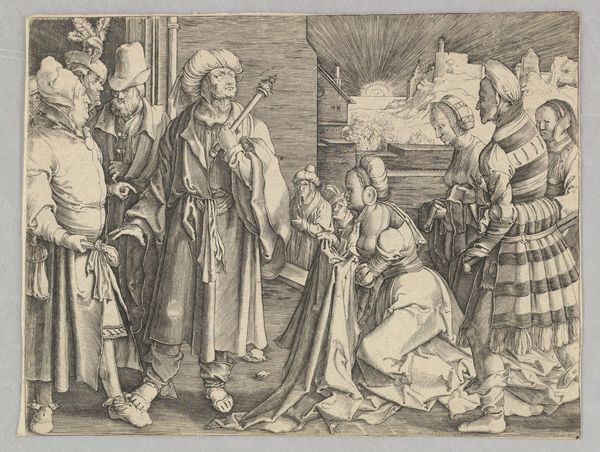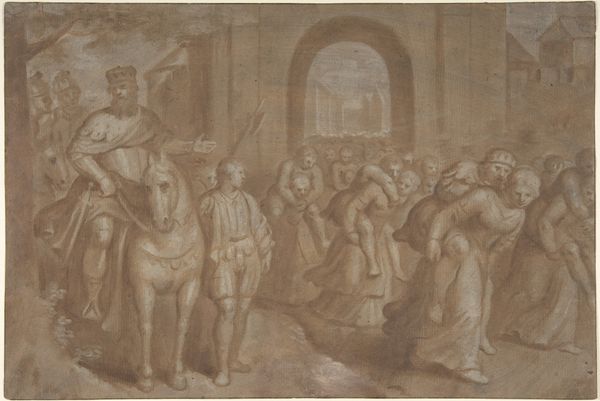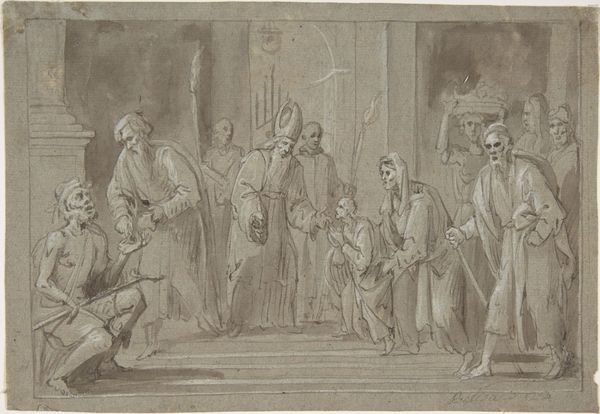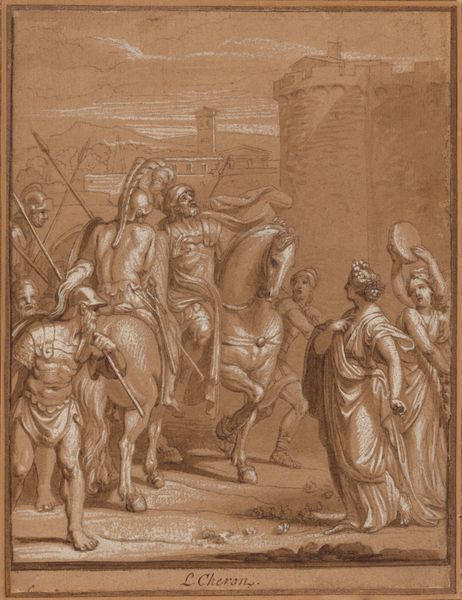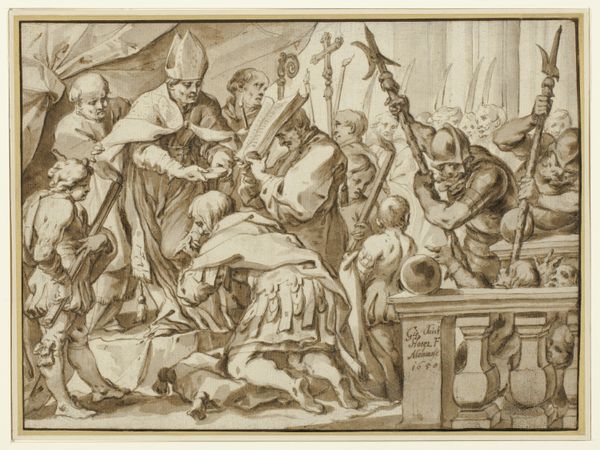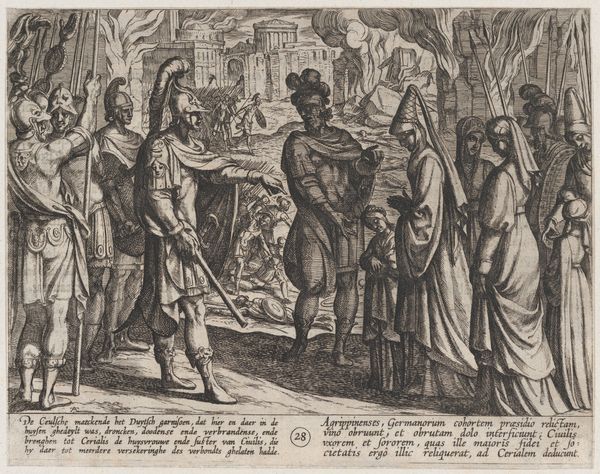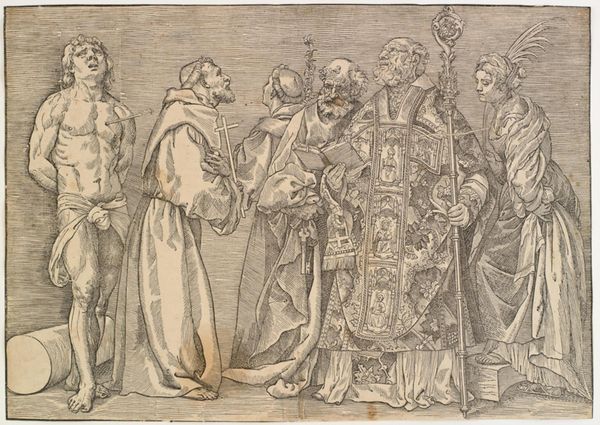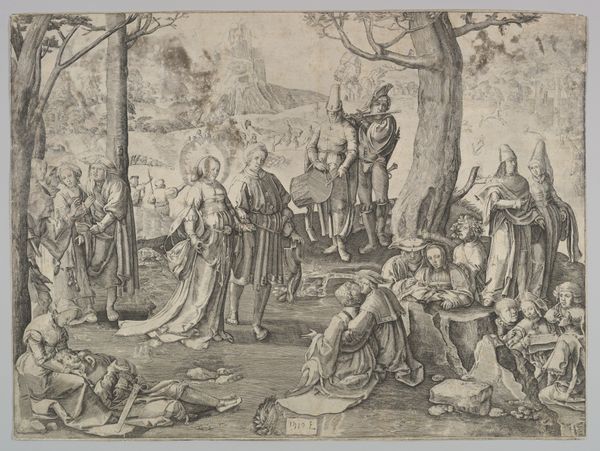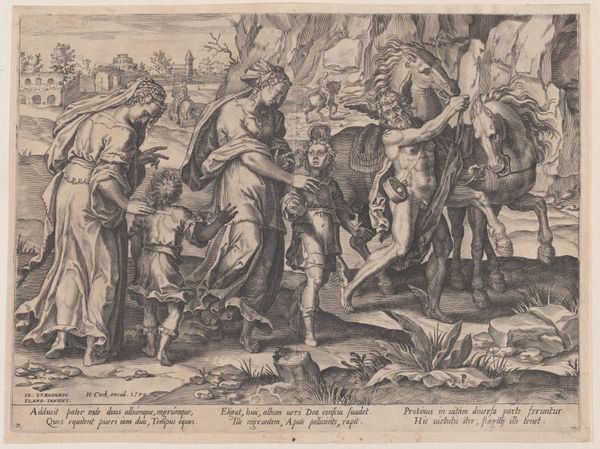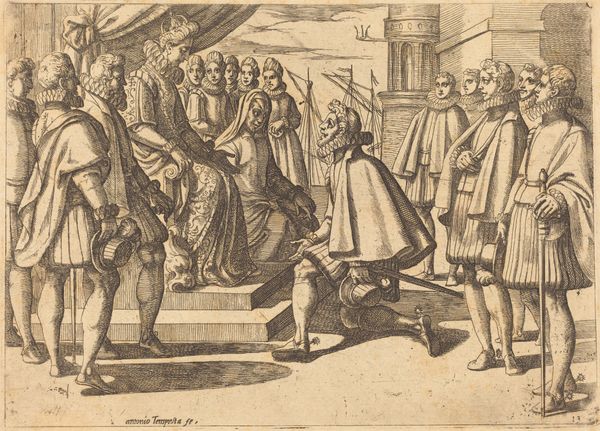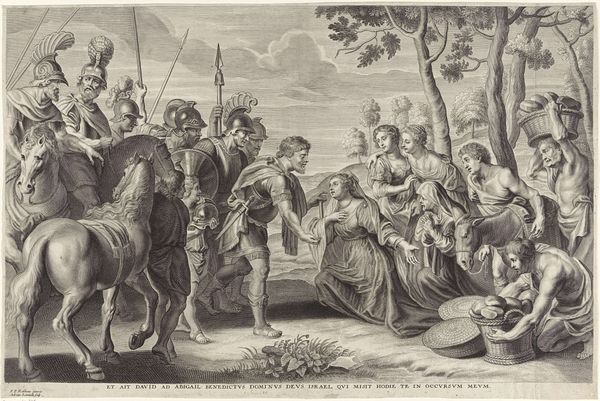
drawing, charcoal
#
drawing
#
baroque
#
charcoal drawing
#
figuration
#
genre-painting
#
charcoal
#
history-painting
Dimensions: 466 mm (height) x 598 mm (width) (bladmaal)
Curator: This charcoal drawing is part of "The Kronborg Series", a collection of historical scenes attributed to Gerard van Honthorst. Its creation spans roughly from 1637 to 1737. Editor: The monochromatic rendering definitely gives it a sense of timelessness, almost like viewing a historical record. But look closer, it's clearly a choreographed exchange; power dynamics meticulously etched through line and shadow. Curator: Yes, that's partly because, beyond the immediate scene, these works aimed to capture Danish history—though some interpret these renderings, particularly given their artistic genesis, as reflections on leadership and sovereign authority. The composition strikes me as being heavily stylized; this approach was conventional for conveying themes of power. Notice, for example, the careful distribution of the figures and symbolic use of space? Editor: I agree; the arrangement emphasizes the central power structure and the performative gestures reinforce hierarchies within gendered and class contexts. And I wonder what underlying narratives these staged portrayals reinforced? Are these romanticized views, given the tumultuous period they indirectly portray? Curator: That tension—between spectacle and history—speaks to the work’s deeper engagement with archetype. The queen becomes a vessel for an image of authority and the supplicant figures become conduits for devotion, perhaps even sacrifice. Editor: Speaking of sacrifice, consider the prostrate figure. Humility is visually offered, but what political price did such a posture truly demand? This image reminds me of the way submission is presented, obscuring a darker struggle to challenge or maintain social dominance. The composition is not just about authority; it's about controlled narrative and public compliance. Curator: Indeed; it raises questions about what the "true" story really is and what these performances of historical "truth" serve to reinforce across centuries. Editor: It’s interesting to consider art like this. On the surface, there are symbols of authority. When considering those historical scenes as more than simple reportage, we are offered space to explore how these symbols functioned during the time, and what traces these historical representations leave in how power is seen today.
Comments
No comments
Be the first to comment and join the conversation on the ultimate creative platform.
